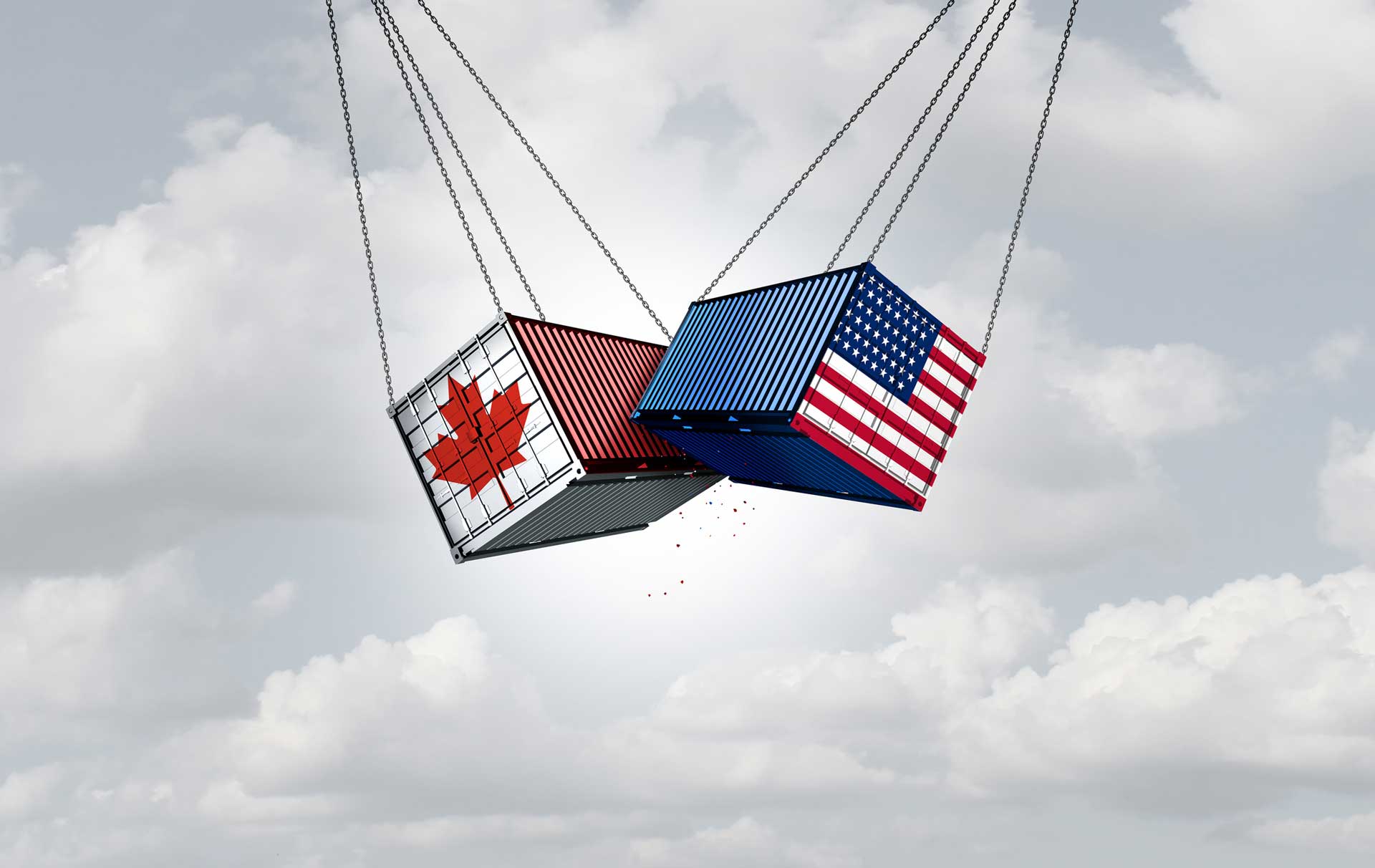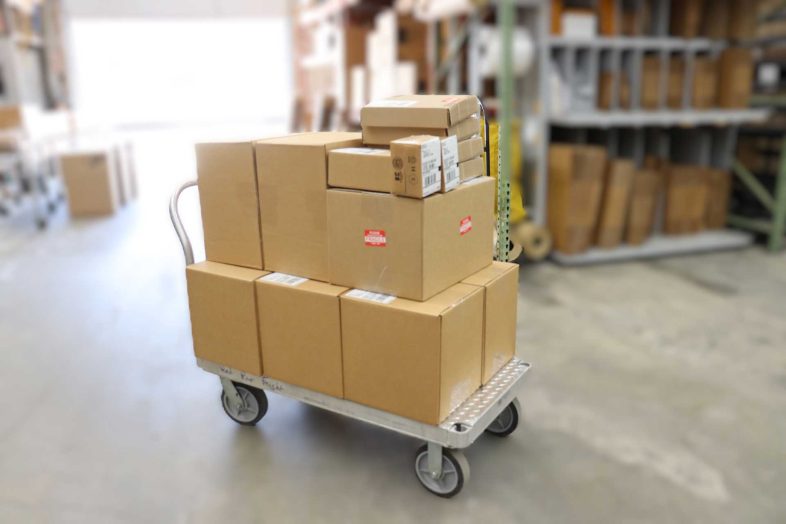If your business ships goods from Canada to the U.S., the new 25% tariffs may have forced you to rethink your logistics strategy.
With higher costs eating into margins, some businesses are making quick moves, rushing to find short-term solutions, while others are stepping back to rethink their entire supply chain.
At Red River Freight, we’ve been speaking with businesses navigating these challenges in real time.
One thing is clear: where you store your inventory matters.
Instead of paying tariffs on every shipment crossing the border, many businesses are moving stock to U.S.-based warehouses, allowing them to fulfill orders domestically and avoid repeated customs fees.
If you’re wondering how this works—or whether it’s the right move for your business—here’s what you need to know.
Why U.S.-Based Warehousing Makes Sense for Canadian Businesses
Every time goods cross the border, costs increase – not just from tariffs, but from customs brokerage fees, import duties, and additional processing delays. For companies shipping frequently to U.S. customers, these costs add up quickly.
Instead of paying tariffs on every individual shipment, businesses can store inventory in the U.S. and ship directly to American customers without repeated customs fees or delays.
For many Canadian businesses, this strategy offers three major benefits:
- Lower overall shipping costs by reducing customs and brokerage fees.
- Faster delivery times with inventory stored closer to U.S. customers.
- More predictable operations by avoiding border-related delays.
While this approach won’t eliminate tariffs entirely, it can significantly reduce their financial impact while improving supply chain efficiency.
For businesses weighing their options, here’s a closer look at why storing inventory in the U.S. is proving to be a smart move.
How Warehousing Saves Costs & Streamlines Your Supply Chain
1. Reduce Costs by Limiting Cross-Border Shipments
Instead of paying import duties, customs fees, and brokerage charges on every shipment, businesses can pay the tariff once upfront when moving inventory into a U.S. warehouse.
From there, products can be shipped to U.S. customers as domestic shipments, avoiding repeated cross-border fees.
Bottom line: If your business ships to the U.S. frequently, warehousing can reduce costs and simplify logistics compared to direct cross-border fulfillment.
2. Improve Delivery Speed & Customer Experience
Cross-border shipping often comes with delays—especially during peak seasons. U.S.-based storage allows businesses to ship domestically within the U.S., which means faster delivery times, lower shipping costs, and fewer customs-related disruptions.
Bottom line: If speed and reliability are priorities for your business, shifting inventory closer to your market can significantly improve order fulfillment and customer satisfaction.
3. Scale Your Warehousing Strategy Based on Demand
For businesses unsure of making a full transition to U.S. warehousing, a phased approach can help. Many companies start by moving high-demand products first while testing fulfillment solutions.
Bottom line: Warehousing doesn’t have to be an all-or-nothing move. Companies can scale up gradually based on demand and logistics needs.
What to Consider Before Moving Inventory to a U.S. Warehouse
Not every business needs to move all their inventory at once. To make the right decision, start by asking yourself these key questions:
- How much inventory should I move? Start with best-selling or frequently shipped items to maximize impact.
- Can I manage fulfillment myself, or do I need 3PL services? If your business isn’t equipped for U.S. order processing, a 3PL provider can handle warehousing, fulfillment and shipping for you.
- What are the costs beyond storage? Factor in fulfillment fees, handling costs, and delivery expenses to ensure the savings outweigh the investment.
The right logistics partner will help guide you through these decisions, offering clear pricing, flexible solutions, and expert advice on warehousing strategy.
At Red River Freight, we’re already working with Canadian businesses facing these same challenges. Whether it’s moving inventory into the U.S. for the first time or optimizing long-term fulfillment strategies, we’ve helped companies reduce tariff-related costs and improve their logistics efficiency.
Is Warehousing the Right Move for Your Business?
For many businesses, the new tariffs are forcing a logistics rethink. While U.S.-based warehousing won’t eliminate tariffs, it can dramatically reduce repeated cross-border fees and simplify fulfillment for U.S. customers.
At Red River Freight, we’re already helping Canadian businesses adjust to these tariff changes with tailored warehousing and fulfillment solutions.
Businesses trust us as their 3PL partner because:
- Our warehouse in Pembina, North Dakota is just minutes from the Canadian border, providing businesses with a convenient U.S.-based storage and shipping solution.
- We manage everything from storage to shipping, helping businesses streamline fulfillment while avoiding repeated cross-border fees.
- With our real-time inventory tracking system, businesses have full visibility into stock levels and order movement, ensuring accuracy and efficiency.
If you’re considering a warehousing solution, we can walk you through your options and help you determine the best approach for your business. We take the time to understand your challenges, assess your options, and provide solutions that make sense for your business.
Let’s talk about how strategic warehousing could help you navigate these tariff changes.
Contact us today to explore your options.



